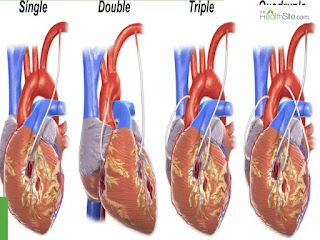Revolutionising Cardiac Care: An In-Depth Examination Of TAVI For Aortic Stenosis
As technology develops, TAVI is set to play an even more significant role in treating heart valve disease.
Cardiovascular diseases continue to represent a global health crisis affecting millions of people worldwide. These conditions necessitate urgent medical intervention, as cardiovascular diseases account for several premature deaths worldwide. These life-threatening coronary problems include coronary artery disease, heart failure, hypertension, stroke and many more. With the growing number of cardiac cases around the world, there is an urgent need for new and more effective treatment options. The field of cardiac care has transformed, introducing minimally invasive procedures, personalised medicine and a well-planned approach to patient management. Innovations and minimally invasive procedures like Transcatheter Aortic Valve Implantation (TAVI) are reshaping the cardiac landscape for better and more effective results.
Aortic Stenosis
Aortic stenosis is a critical heart condition often caused by age-related cardiac issues or inherent heart problems. It results in restricted blood flow from the heart to the body's other organs, leading to dizziness, fatigue, and chest pain. These conditions are often brought on by stenosis, which narrows and malfunctions the aortic valve. The usual course of treatment for this condition was SAVR, which involved the traditional treatment method. Due to drastic transformations and technological advancements in medicine, transcatheter aortic valve implantation (TAVI) has been introduced to treat aortic stenosis.
TAVI
Transcatheter Aortic Valve Implantation (TAVI) heart procedure performed on patients diagnosed with aortic stenosis. This treatment aims to implant a replacement aortic valve instead of the old, damaged one. This approach is used for patients who are at high risk for traditional treatment methods and have significant aortic stenosis. TAVI's shortened recovery period and lower risk have been of great help to many patients. This procedure aims to enhance the patient's quality of life and lengthen their life expectancy.
The Procedure
TAVI is a minimally invasive technique. It is typically performed with a catheter, a thin, flexible tube introduced through a small incision, usually in the groin area. The guided catheter delivers the bioprosthetic valve to the location of the defective valve, where it expands and takes over the functions of the original valve.
TAVI: Advantages And Outcomes
Like any other cardiovascular treatment, TAVI has its advantages and outcomes. Compared to the traditional treatment method, TAVI offers many benefits. This procedure only involves a small incision, which reduces the risk of injury, discomfort, and recovery time. Depending on how quickly they heal, patients can resume regular activities at home in a few days. This shorter recovery period and limited days in the hospital make this whole process a lot easier for the patients. Additionally, TAVI also comes with a lower risk of post-procedural complications like infection.
TAVI represents a significant advancement in treating aortic stenosis surgical aortic valve replacement and improves patients' quality of life and results.
#CardiacCare
#AorticStenosis
#TAVI
#HeartHealth
#MinimallyInvasive
#CardiologyInnovation
#ValveReplacement
#MedicalAdvancements
#HeartSurgery
#InterventionalCardiology
#HealthyHeart
#HeartDiseaseAwareness
#CardiacResearch
#HeartCareRevolution
#CardiovascularHealth
#AorticStenosis
#TAVI
#HeartHealth
#MinimallyInvasive
#CardiologyInnovation
#ValveReplacement
#MedicalAdvancements
#HeartSurgery
#InterventionalCardiology
#HealthyHeart
#HeartDiseaseAwareness
#CardiacResearch
#HeartCareRevolution
#CardiovascularHealth
International Research Awards on Cardiology and Cardiovascular Medicine
Visit: cardiology.pencis.com
Award Nomination Link - https://cardiology-
Award Registration Link - https://cardiology-
Member Nomination Link - https://cardiology-
Member Registration Link -https://cardiology-
Award Winner Link - https://cardiology-
Testimonial Video Link - https://www.youtube.com/watch?
Presentation Video Link - https://www.youtube.com/watch?
Enquiries: cardiology@pencis.com
Get Connected Here


.jpeg)

.webp)
No comments:
Post a Comment